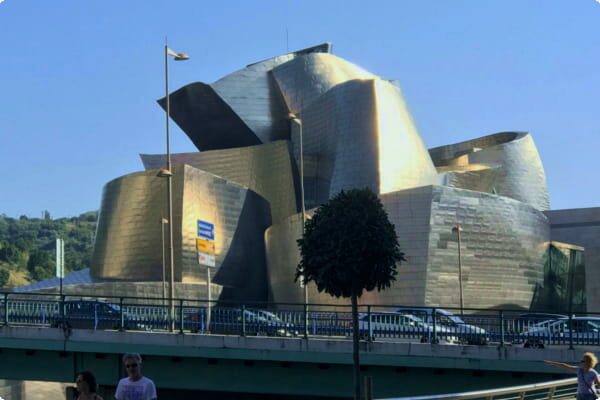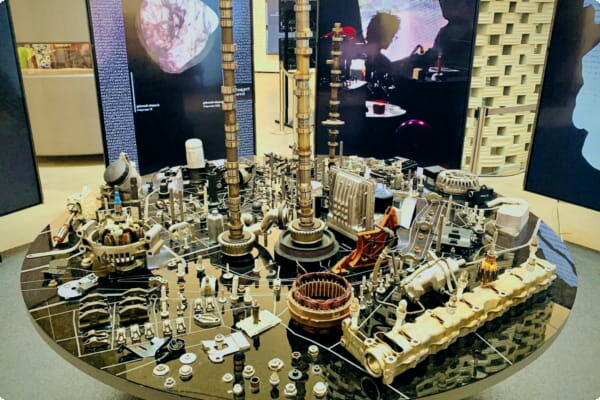Whether you're planning a visit to the Guggenheim Museum in Bilbao or you're looking for a few tips for the art-lovers among you, this article will provide you with a few handy suggestions.
The first step in Bilbao's transformation from an industrial hub to a cultural hothouse
During the 20th century, Bilbao had to undertake a radical transformation of its economy. In order to stop the migration of highly qualified personnel and to retain its economic competitiveness, the city had to shed its industrial skin and create a new service economy. In doing so, it transformed itself into a knowledge-based economy, boosting its quality of life and fostering social cohesiveness. It is also an example of how urban regeneration can breathe life into a rundown community.
A critical component of the transformation of Bilbao was its systematic and integrated approach to urban development. It included major infrastructure investments and a systematic order of development, a hallmark of a visionary long-term approach.
The city has also committed to environmental and social regeneration. It has rehabilitated historic buildings, restored historic neighborhoods, and cleaned up the water of the estuary. This has improved the quality of life for residents and increased the city's ability to compete in the global market.
The 'Guggenheim Effect'
Despite the success of Bilbao's Guggenheim Museum, there's still a lot of debate about the Bilbao effect. The term has been misinterpreted in a number of ways and is often cited as a pretext for overambitious revitalisation strategies.
A few key factors were behind the Bilbao effect, including a strong urban plan and a range of complementary actions. It's a good example of how large-scale architectural projects can transform a city.
Guggenheim in Bilbao was part of a wider urban regeneration scheme. The regeneration scheme included investment in infrastructure, such as a metro system. It also included investment in other urban essentials.
The project was led by Thomas Krens, who was the director of the Solomon R. Guggenheim Foundation, from 1988 to 2008. During his time at the foundation, Krens pursued a controversial global expansion strategy. He wanted to establish a chain of Guggenheims in cities around the world.

Hotel Miro and Pension H30 Bilbao
Located just across the Guggenheim Museum Bilbao, the Hotel Miro is a stylish boutique hotel that is designed to give you the ultimate Bilbao experience. Named after Spanish fashion designer Antonio Miro, the hotel offers minimalist design and an individualized concierge service. It is a great place to stay if you are looking for a weekend getaway full of sightseeing. The hotel's sleek and minimal rooms include free Wi-Fi and flat-screen TVs.
The hotel has a gym with state-of-the-art equipment. Additionally, the hotel has a 24-hour honesty bar and concierge services. You can also take advantage of a variety of work areas. The bathroom includes a bathtub, free mineral water, and bathrobes.
The Pension H30 Bilbao is located in the centre of Bilbao and within walking distance of the city's main attractions. It is near the Gothic-revival Bilbao Catholic Cathedral and the Mercado de la Ribera Market.
Pintxo bars
During your visit to Bilbao, you'll want to try some of the best pintxos. These delicious small morsels of savoury food are a main attraction in the city. Almost all of the restaurants in Bilbao serve these tasty little treats.
One of the best places to enjoy the local specialties is at the Mercado de la Ribera. This market has an impressive array of stalls. The market is located on the edge of the old town. The building of the market dates back to the 20th century.
Gure Toki is a popular pintxos bar. This is a family-run restaurant that offers gourmet pintxos. They have a great wine selection and some very innovative pintxos. Some of their dishes include grilled foie with apples, txori al infierno, chorizo and idiazabal cheese soup.

Book a tour
Located in Bilbao, Spain, Guggenheim Museum Bilbao is one of the world's most prominent museums. It features the works of some of the world's most famous modern artists. There is a permanent collection, and temporary exhibitions are held at the museum from time to time. The museum is run by the Solomon Guggenheim Foundation.
The museum was designed by Canadian-American architect Frank Gehry. The building is made of glass and titanium. The interior is just as captivating as the exterior. It is also clad with hundreds of silvery titanium plates that change tone with the light.
Visitors can spend hours exploring the museum. A tour guide is available to explain the history of the museum and the significance of the works. In addition to the main exhibits, the museum features pieces from local artists.





